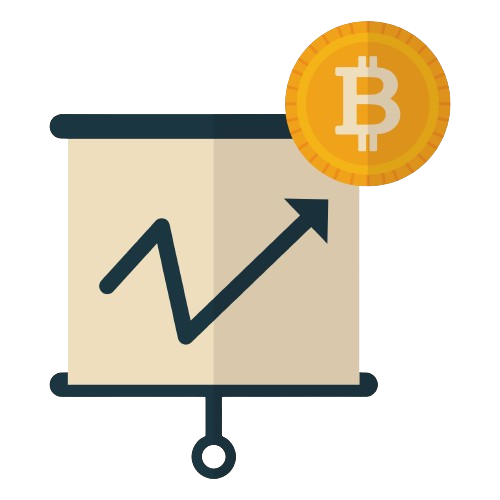
Liquidity describes the degree to which an asset can be quickly bought or sold without significantly impacting the price. Bitcoin liquidity directly affects trading outcomes. Traders must consider liquidity’s nuances to excel in Bitcoin markets. In this guide, we explore why liquidity matters, how it impacts Bitcoin trading strategies and behaviors, and the tools traders employ to assess and enhance liquidity. Becoming a liquidity-conscious trader strengthens trading skills.
Why Liquidity Matters in Bitcoin Trading
Liquidity enables entering and exiting positions seamlessly. Low liquidity often leads to price spikes and crashes on relatively small market orders; high bid-ask spreads due to limited open orders on order books; difficulty executing larger market orders without substantial slippage; and getting stuck in positions that cannot be closed promptly near desired prices.
High liquidity minimizes these downsides, allowing efficient trade entries and exits with minimal price disturbance. Liquidity directly impacts trader profitability and risk management options.
Assessing Bitcoin Liquidity Conditions

When assessing Bitcoin liquidity, traders need to gauge various factors to determine trade feasibility. They look at exchange-reported volumes, where higher reputable volumes suggest sufficient liquidity. Order book depth, with tight spreads between bid and ask orders, is another indicator of liquidity.
Observing trading ranges helps identify frequent price movements, indicating liquidity levels. Price gaps on charts can reveal liquidity voids, while slippage on entries or exits may indicate poor liquidity. By combining these metrics, traders can gain a comprehensive view of liquidity conditions. However, it’s essential to be cautious as exchange volumes can be manipulated, requiring additional data for validation.
How Liquidity Impacts Bitcoin Trading Strategies and Tactics
In times of low liquidity, traders need to adjust their trading strategies to minimize risks. This includes reducing position sizes to avoid impacting the market and experiencing slippage when exiting positions. Choosing limit orders over market orders helps prevent removing liquidity by crossing the spread. Using wider stops prevents premature exits due to short-term price spikes, while having flexible profit targets allows for careful scaling out of positions in illiquid markets. It’s also important to avoid momentum entries during low liquidity periods, as this can heighten risk. Patience is key, and waiting for sufficient liquidity before executing trades ensures proper execution. Conversely, in high liquidity conditions, traders can adopt more aggressive tactics such as larger position sizes and tighter stops without risking excessive slippage. Adapting strategies according to liquidity conditions is crucial for improving trading outcomes.
How Traders Contribute to Bitcoin Liquidity
Bitcoin traders themselves directly provide liquidity through their buy and sell orders. Those who “make markets” by placing limit orders that remain open on order books contribute valuable liquidity. Traders can thus enhance liquidity by Using limit orders rather than crossing spreads via market orders. Sizing limits order quantities at round numbers to increase depth. Spreading orders across bids and asking to tighten spreads. Ensuring orders are large enough to allow partial execution and letting limit orders remain open rather than getting canceled.
Providing balanced liquidity on both sides of the order book strengthens markets for all participants.
Pitfalls of Artificially Inflating Bitcoin Liquidity

Artificially inflating Bitcoin liquidity through tactics like wash trading and spoofing can harm market integrity. Wash trading involves buying and selling orders without genuine transfer of ownership, creating false volume.
Spoofing entails placing large orders meant to be canceled before execution, manipulating prices and creating fake demand or supply. These practices aim to deceive traders about market liquidity. However, experienced traders can often identify such tactics by analyzing volume patterns, trade histories, and order cancellations. Ultimately, reliance on liquidity illusions rather than genuine market activity can erode trust and confidence over time, diminishing market integrity.
Selecting Liquid Bitcoin Trading Venues
When choosing where to trade Bitcoin, it’s important to consider the liquidity of different exchanges. Not all exchanges offer the same level of liquidity. Traders should look at the total reported volumes across exchanges. The top-tier exchanges usually have the deepest liquidity pools, providing better trading opportunities. Factors to consider include the geographic distribution of users, as a global user base means active trading throughout the day. Reviews of execution quality can provide insights into slippage and spread tightness. Look for exchanges offering advanced order types like stop losses and hidden orders, which help conserve liquidity.
Exchanges with active market makers and algorithms can increase volumes and tighten spreads. Regulatory compliance is also crucial, as it instills confidence among institutional traders. While reputable exchanges may have higher fees, their liquidity makes trading more feasible compared to less liquid venues. Regional exchanges may serve specific country needs but might lack global reach.
Using Bitcoin Futures to Access Liquidity
Bitcoin futures contracts from well-known derivatives exchanges provide excellent liquidity options for institutional traders. These contracts offer several advantages, including central clearing, which reduces counterparty risks and encourages liquidity provision. With cash settlement, institutions don’t need to hold Bitcoin, making it ideal for large trades. The tight bid-ask spreads on these futures contracts, thanks to hyper-liquid order books, ensure smooth trading. Additionally, index pricing aggregates data from top exchanges, helping to mitigate pricing manipulation. Overall, Bitcoin futures contracts offer guaranteed liquidity and efficient price discovery, making them an attractive option for large trades compared to directly trading in spot markets.
Conclusion
Evaluating and optimizing liquidity conditions must remain top priorities for Bitcoin traders. Bitcoin’s liquidity profile continues evolving but still exhibits limitations at times. By planning trades considering liquidity effects, accessing the deepest exchange venues, providing balanced order book depth, and leveraging futures where appropriate, traders can master Bitcoin’s prevalent liquidity challenges. With vigilance, risk management, patience, and proper execution, Bitcoin’s liquidity limitations present just another puzzle for skilled traders to solve rather than an insurmountable obstacle.